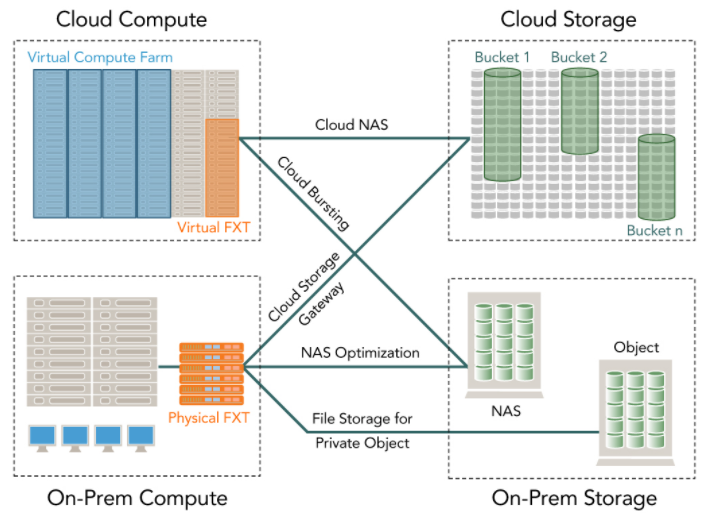
The future of IT is in the cloud, but it will be a hybrid cloud. And that means things will by necessity get complicated.
Public clouds from the likes of Amazon Web Services, Microsoft, Google and IBM offer enterprises the ability to access massive, elastic and highly scalable infrastructure environments for many of their workloads without having to pay the cost of bringing those capabilities into their on-premises environments, but there will always be applications that businesses will want to keep behind the firewall for security and efficiency reasons. That reality is driving the demand not only for the ability to create flexible and agile private clouds in-house, but also for ways to easily move workloads and data between public and private clouds and other legacy datacenter infrastructure.
Public cloud providers, most of whom started their lives as enterprise datacenters serving their own needs, understand this desire. During a conference call in October to discuss the company’s latest quarterly financial earnings, Microsoft CEO Satya Nadella noted that Azure usage more than doubled in the three-month period and revenue jumped 90 percent, and talked about the company’s efforts in the hybrid cloud.
“We have been focused on addressing the real-world needs of customers with our differentiated approach to the cloud, architecting for hybrid consistency, developer productivity, artificial intelligence capabilities and trusted security and compliance,” Nadella said. “To support the emerging intelligent cloud, intelligent edge application pattern, you need a consistent stack across the public cloud and the edge. Merely providing colocation services or connectivity between on-premise data centers and the public cloud is not sufficient to meet customer needs. You need consistency across the development environment, operating models, and technology stacks.”
That hybrid cloud push was key to Microsoft’s decision to acquire Avere Systems, a ten year old company that sells high performance flash storage solutions designed to make it easier and faster to store and retrieve data in public and private clouds as well as being useful for on-premises systems. The company has raised $97 million funding since 2008, including $14 million in March 2017 from investors that included Microsoft rival Google.
The vendor’s virtual vFXT and physical FXT Edge filers, which can feed Windows and Linux systems, are aimed at enabling enterprises to build hybrid cloud environments as their businesses demand while enabling them to protect their datacenter investments. The vFXT Edge filer is a virtual network file system that enables users to burst their data from on-premises storage systems into the cloud and to establish a multi-protocol NAS filer in the cloud to enable the sharing and managing of storage and compute in the cloud and datacenter.
Avere’s physical FXT Edge filers and the Avere OS operating system let businesses use object-based storage as though it was a traditional NAS, provide cloud gateway exchange protocols between NFS, SMB, and object-based APIs, and cache the most active data closer to users to help reduce latency.
“Our team of file systems experts created a technology that not only optimized critical on-premises storage resources but also enabled enterprises to move mission-critical, high performance application workloads to the cloud,” Avere President and CEO Ron Bianchini wrote in a post on the company blog announcing the agreement with Microsoft. “Avere’s cloud solutions provide low-latency data access to datacenter storage resources, remote offices and the public cloud. Our customers efficiently share both storage and compute resources across multiple data centers, and effectively implement and use private and public cloud infrastructures.”
The company over the years has attracted the attention of AWS and Google Cloud as well as Microsoft’s Azure. Along with the investment from Google last year, Avere in 2015 made its vFXT Edge filers generally available on the Google Cloud Platform, and later expanded its offerings on the cloud platform. Over the past few years, Avere also has made its technology available on AWS, noting in early 2016 that NASA had selected Avere to consolidate its legacy storage and move datasets to AWS. In 2015, Avere announced it was bringing its vFXT Edge filers to Microsoft Azure. Microsoft is expected to continue to support other cloud platforms with Avere once the deal closes. The public cloud space is a crowded and competitive one, but it’s currently dominated by AWS, whose market share is larger than that of Microsoft, Google and IBM combined.
Jason Zander, Microsoft’s corporate vice president of Azure, said in a post on the company blog that Avere has seen success in the media industry with customers like Sony Pictures Imageworks, Moving Picture Co, and Mac Guff, but that demand for high performance storage capabilities is coming from such verticals as life sciences, oil and gas, education, financial services, and manufacturing. Zander noted that the Library of Congress, John Hopkins University, and Teradyne also are Avere customers.
Avere will add to Microsoft’s storage capabilities in Azure, which range from file and disk to archive and object storage to a NoSQL database. It is only the latest acquisition by Microsoft as it looks to build out its cloud capabilities. In August 2017, the tech giant bought Cycle Computing, which provided cloud computing orchestration for HPC environments.






Be the first to comment